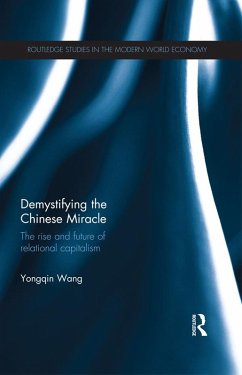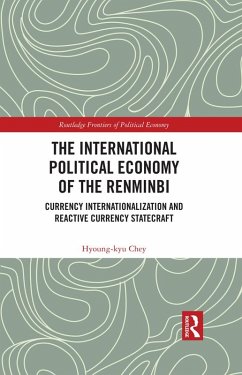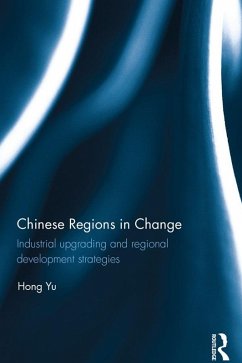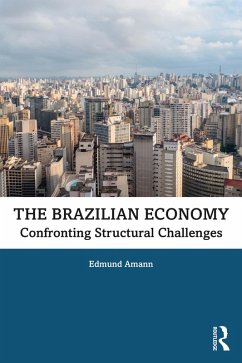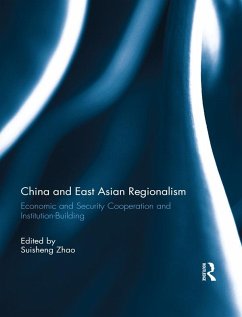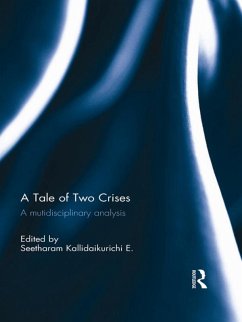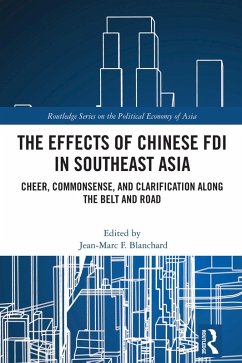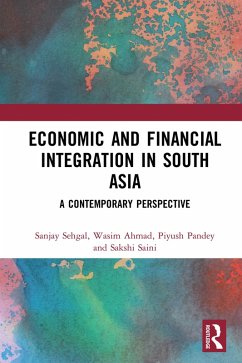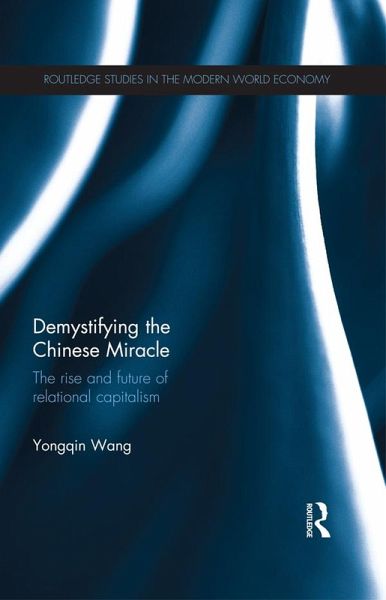
Demystifying the Chinese Miracle (eBook, PDF)
The Rise and Future of Relational Capitalism
Versandkostenfrei!
Sofort per Download lieferbar
45,95 €
inkl. MwSt.
Weitere Ausgaben:

PAYBACK Punkte
23 °P sammeln!
The last three decades has witnessed miraculous economic growth of China. What has accounted for its miracle? What is the nature and future of the Chinese model? Is it unique?This book presents an analytical framework to demystify China's economic growth miracle. The book suggests that interlinked and relational contracts between the agents (in particular, between the state and the business) can compensate for flawed markets to achieve high growth. This kind of relational capitalism is significant in the investment-based stage of development, when mobilization of resources to exploit the exist...
The last three decades has witnessed miraculous economic growth of China. What has accounted for its miracle? What is the nature and future of the Chinese model? Is it unique?
This book presents an analytical framework to demystify China's economic growth miracle. The book suggests that interlinked and relational contracts between the agents (in particular, between the state and the business) can compensate for flawed markets to achieve high growth. This kind of relational capitalism is significant in the investment-based stage of development, when mobilization of resources to exploit the existing technologies is key for growth.
The book presents a general theory of interlinked relational contract, the workhorse model of the book. The theory highlights that effective governance is a function of market extent and market completeness. The process of economic development and modernization can be looked at fruitfully from two perspectives: the markets and the institutions and their interactions. The book stresses the critical fit between the development stage and the governance for a country's economic transition and development and thus the idea of "appropriate institutions".
This book presents an analytical framework to demystify China's economic growth miracle. The book suggests that interlinked and relational contracts between the agents (in particular, between the state and the business) can compensate for flawed markets to achieve high growth. This kind of relational capitalism is significant in the investment-based stage of development, when mobilization of resources to exploit the existing technologies is key for growth.
The book presents a general theory of interlinked relational contract, the workhorse model of the book. The theory highlights that effective governance is a function of market extent and market completeness. The process of economic development and modernization can be looked at fruitfully from two perspectives: the markets and the institutions and their interactions. The book stresses the critical fit between the development stage and the governance for a country's economic transition and development and thus the idea of "appropriate institutions".
Dieser Download kann aus rechtlichen Gründen nur mit Rechnungsadresse in A, B, BG, CY, CZ, D, DK, EW, E, FIN, F, GR, HR, H, IRL, I, LT, L, LR, M, NL, PL, P, R, S, SLO, SK ausgeliefert werden.




